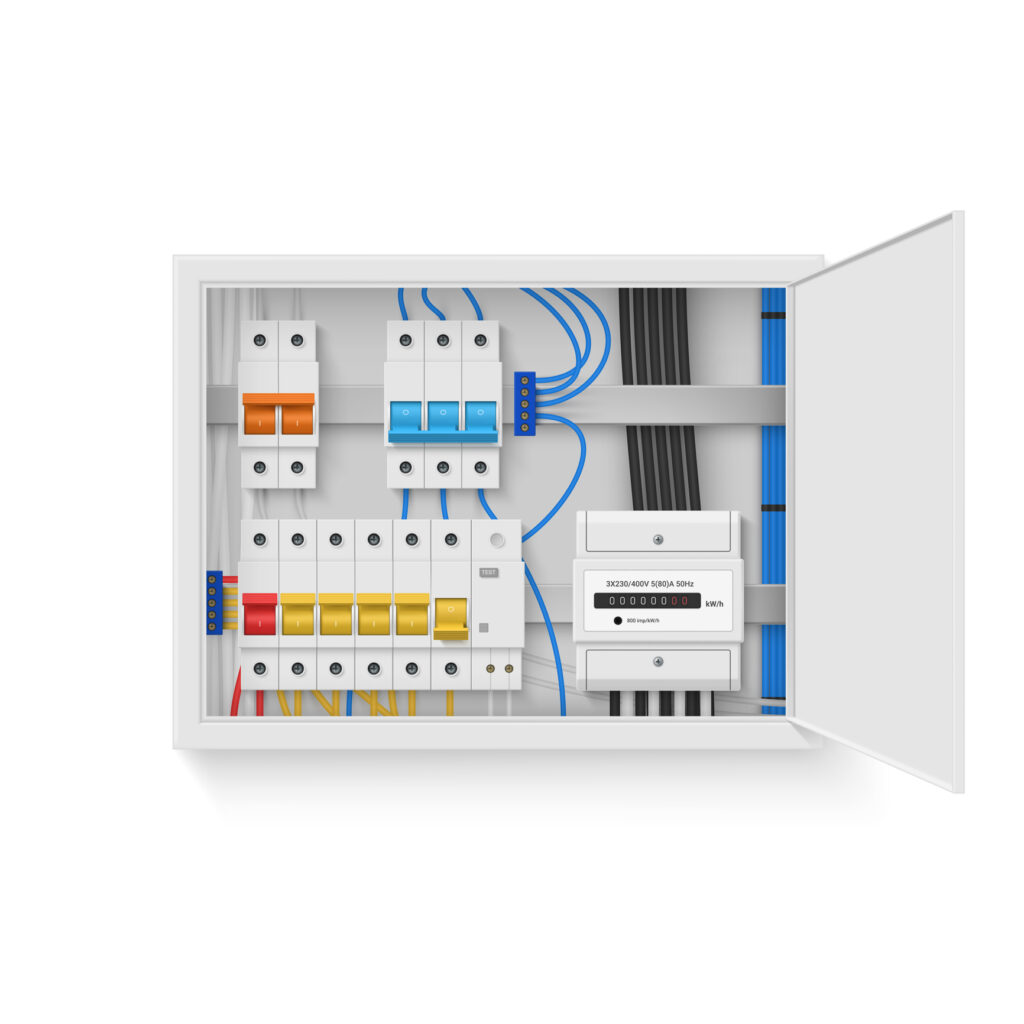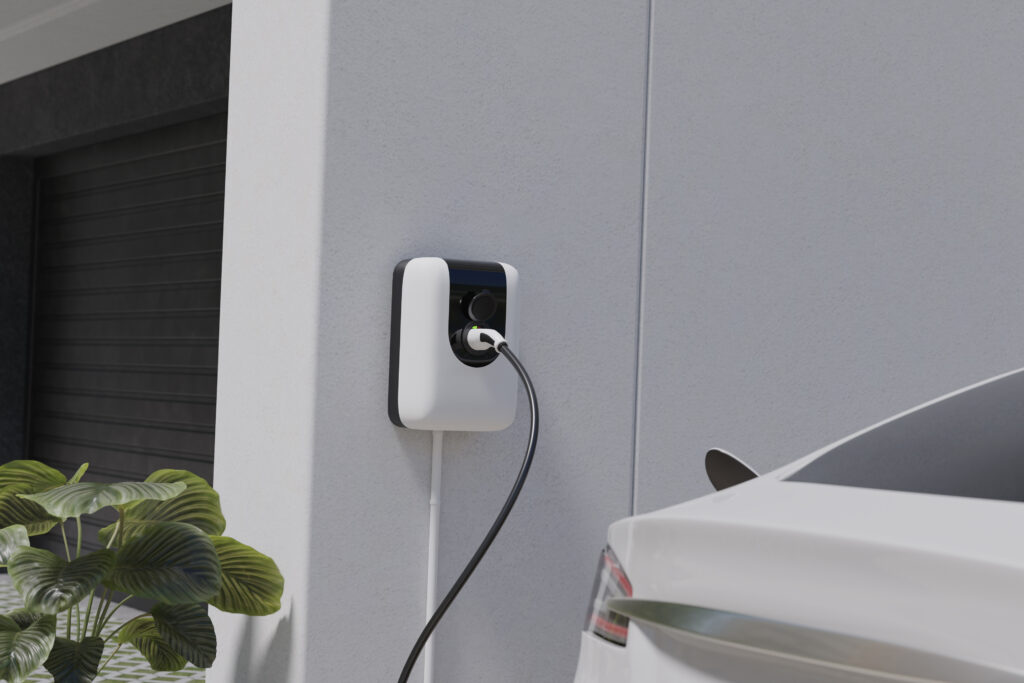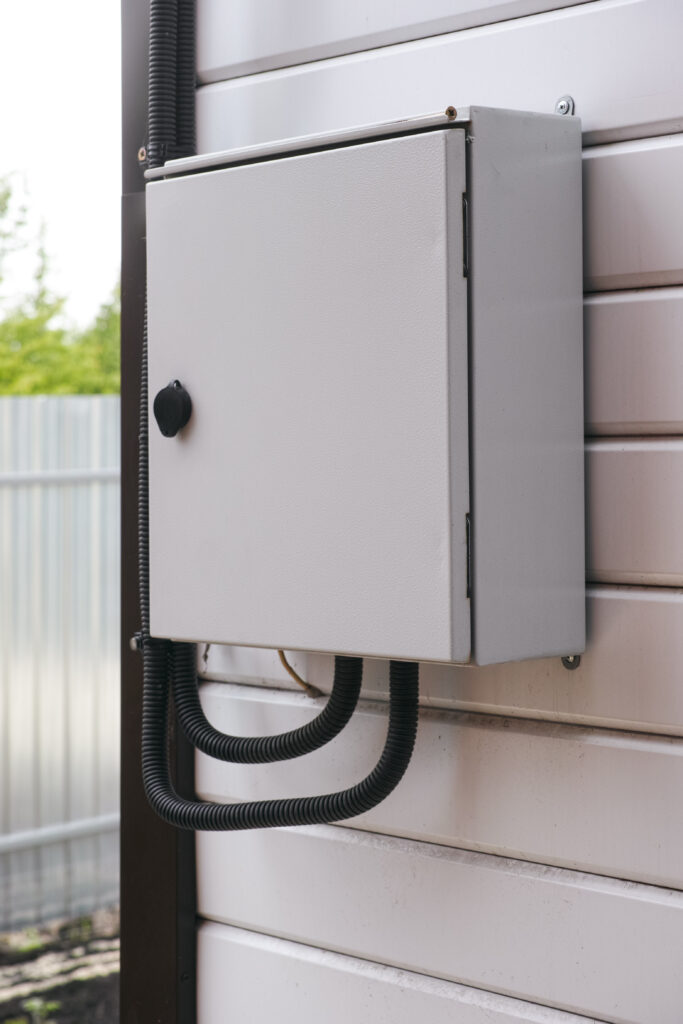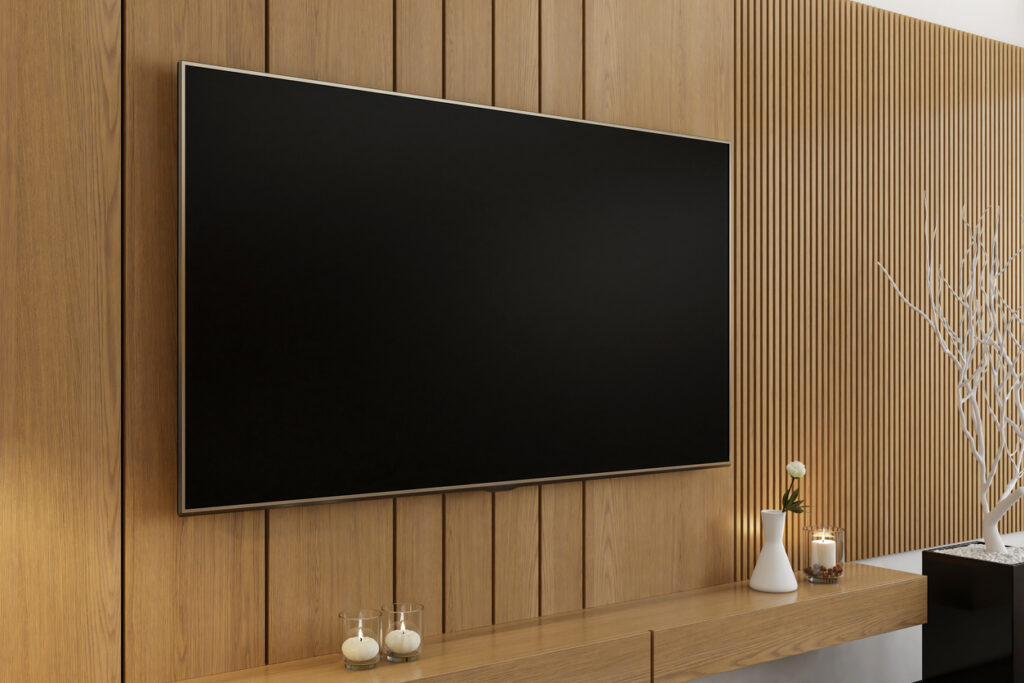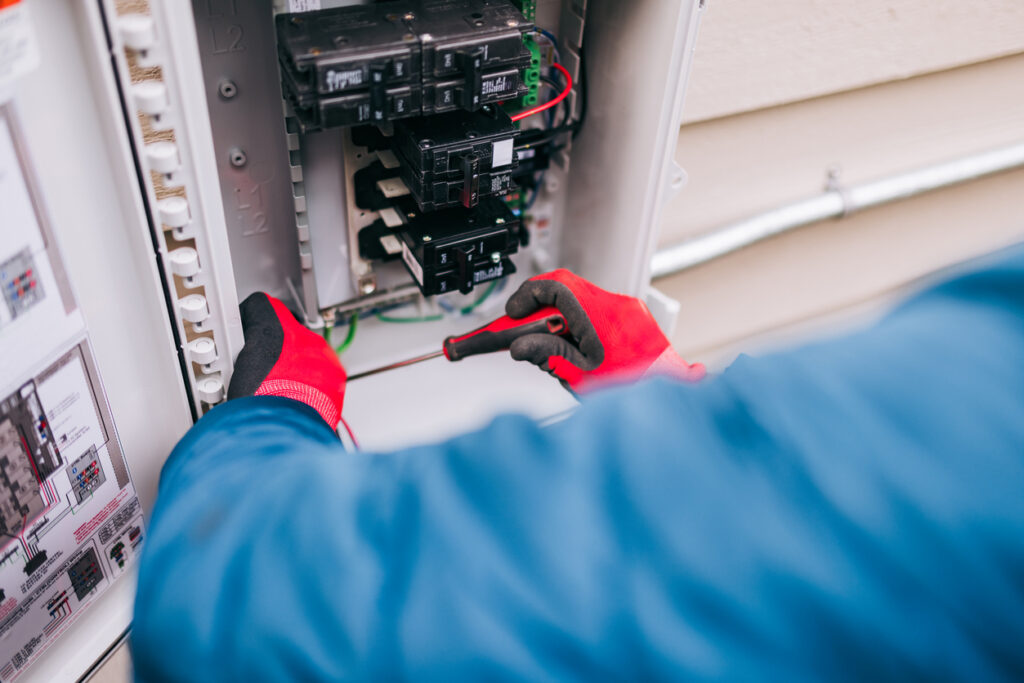A new electrical panel installation is a critical upgrade for homeowners looking to improve the safety, functionality, and efficiency of their electrical systems.
As the heart of your home’s electrical infrastructure, your electrical panel ensures that power is properly distributed to various circuits throughout your home. Over time, as homes age or electrical demands increase, an outdated or insufficient panel can become a safety hazard.
This blog will explore the costs, steps, and benefits of installing a new electrical panel, providing valuable insights to help homeowners make informed decisions about this important home improvement.
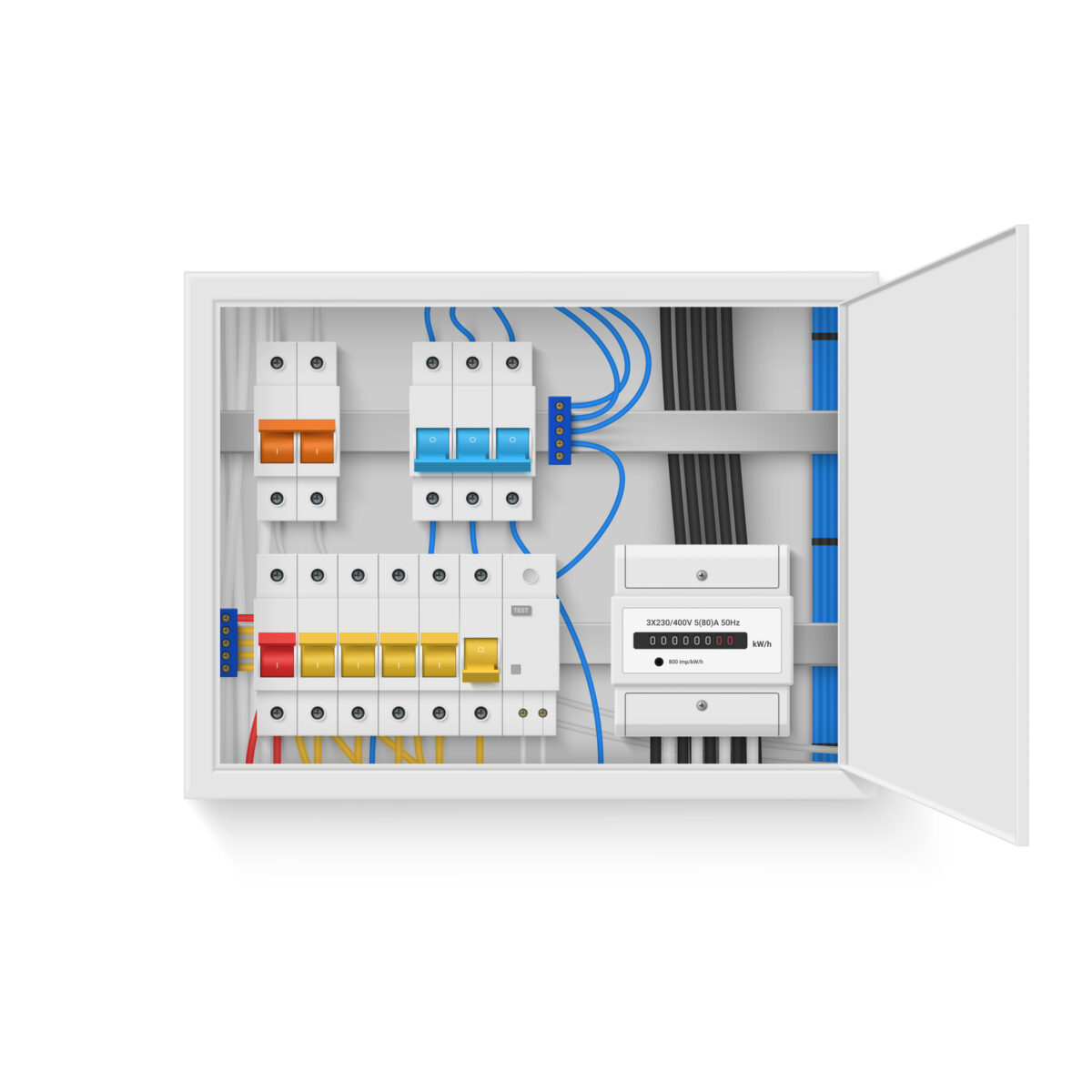
Costs of New Electrical Panel Installation
When considering a new electrical panel installation, understanding the associated costs is crucial for budgeting and planning the project.
The cost of installing a new electrical panel can vary significantly depending on several factors, including the type of panel, the complexity of the installation, and additional upgrades that may be required.
How Much Does a New Electrical Panel Installation Cost?
On average, homeowners can expect to pay between $1,000 and $3,000 for a new electrical panel installation.
This price range covers most residential installations, including the cost of the panel itself, labor, and standard materials. However, the final cost can fluctuate based on specific needs and local factors.
What Influences the Cost of Installation?
Several factors can influence the cost of installing a new electrical panel.
Panel Size and Amperage
A 100-amp panel may cost less than a 200-amp panel, but larger homes with more electrical demand may require the higher amperage for reliable power distribution.
Complexity of the Installation
If the installation requires extensive rewiring, removing an old panel, or adding additional circuits, the cost can increase.
Location
Labor costs can vary depending on the region or city where you live. High-demand areas or locations with a higher cost of living may see increased installation fees.
Are There Any Additional Costs?
In addition to the basic installation, there may be additional costs.
Permits
Many areas require permits for electrical work, which can cost anywhere from $50 to $300, depending on local regulations.
Electrical Inspections
After the installation, some jurisdictions may require an inspection to ensure that the new panel complies with local building codes. This typically adds another $100 to $200.
Upgrades to Wiring
If your home’s wiring is outdated or incompatible with the new panel, additional work may be necessary. This can increase the overall cost of the installation.
By understanding these factors, homeowners can make more informed decisions and better prepare for the costs involved in a new electrical panel installation.
Steps for New Electrical Panel Installation
Installing a new electrical panel is a complex and highly technical process that should always be handled by a licensed professional. Proper installation ensures that your home’s electrical system operates safely and efficiently.
Below are the key steps involved in a new electrical panel installation.
Why Might I Need a New Electrical Panel Installation?
Before diving into the installation process, it’s important to understand when and why a new electrical panel is necessary. Below are common reasons for upgrading or replacing an electrical panel.
Outdated Panel
Older homes with outdated panels may not be able to handle modern electrical demands, leaving the system prone to overloads.
Increased Electrical Demand
As you add more appliances, electronics, or high-power devices like air conditioning units, your existing panel may no longer be sufficient.
Safety Concerns
If your current panel shows signs of wear, corrosion, or malfunction, it poses a potential fire hazard.
What Are the Signs That I Need to Replace My Electrical Panel?
Signs that indicate the need for a new electrical panel installation include:
Frequent Circuit Breaker Trips
If your breakers are frequently tripping, it may be a sign that the panel cannot handle the load.
Flickering or Dimming Lights
Lights that flicker or dim regularly could be a sign of electrical issues stemming from the panel.
Burning Smell or Discoloration
A burning smell or scorch marks near the panel indicate that there is a serious safety issue that needs immediate attention.
What Are the Steps Involved in Installing a New Electrical Panel?
1. Assessment of Electrical Needs
A licensed electrician will first assess your home’s electrical needs by considering the number of circuits required, the amperage rating of the new panel, and any special considerations (such as home automation systems or solar panels).
This ensures that the new panel will accommodate all electrical demands.
2. Choosing the Right Panel
The electrician will recommend the right type of panel based on the size of your home and electrical consumption.
A 100-amp panel may be sufficient for smaller homes, but larger homes or homes with high power requirements may need a 200-amp panel.
3. Removing the Old Panel
The electrician will safely disconnect the power supply and remove the old electrical panel.
This step may involve disconnecting and rewiring several circuits to ensure that the new panel can be properly integrated.
4. Installing the New Electrical Panel
The new panel is mounted, and the necessary wiring is connected.
This involves hooking up the main power supply, as well as all circuits that distribute power throughout your home. The electrician will ensure that everything is wired according to local code requirements.
5. Testing and Inspection
After installation, the electrician will thoroughly test the new panel to ensure that it is working correctly.
This includes checking the breakers, circuit connections, and overall system functionality. Depending on local regulations, an inspection may be required to verify that the installation meets safety codes.
Can I Install a New Electrical Panel Myself?
While it may be tempting to save on costs by attempting a new electrical panel installation yourself, this is a job that should always be left to a professional.
Electrical work is hazardous and requires knowledge of local building codes, wiring regulations, and safety protocols. A licensed electrician has the expertise to ensure that the panel is installed correctly, safely, and in compliance with all legal requirements.
What are the Benefits of Upgrading to a New Electrical Panel?
Upgrading to a new electrical panel installation offers several advantages that can significantly enhance your home’s electrical system, safety, and overall functionality.
Whether you’re upgrading due to outdated equipment, increased power demands, or safety concerns, the benefits of a new electrical panel are clear:
Increased Safety
Older panels, especially those that use outdated technology, are more prone to malfunctions, which can lead to electrical fires.
A modern panel meets up-to-date safety standards and is equipped with advanced circuit breakers that protect your home from overloads and electrical faults.
Ability to Handle Higher Electrical Loads
A new electrical panel installation allows you to handle higher electrical loads, ensuring that your home’s electrical system can support everything from air conditioning units to electric vehicles and modern home automation systems.
Improved Energy Efficiency
By preventing overloading of circuits and minimizing power surges, new panels help optimize energy usage, which can contribute to lower utility bills.
Additionally, modern panels are better equipped to handle energy-efficient technologies like LED lighting and smart home systems, which can further reduce energy consumption.
Enhanced Home Value
Installing a new electrical panel can increase the resale value of your home.
Homebuyers are more likely to be attracted to a property with a modern, well-maintained electrical system, as it eliminates potential future repair costs.
Peace of Mind and Long-Term Savings
Perhaps one of the greatest benefits of a new electrical panel installation is the peace of mind it provides.
Knowing that your electrical system is up-to-date and capable of safely handling your home’s power requirements allows you to avoid costly and potentially dangerous electrical issues down the road.
With a new panel, you can enjoy a more reliable power supply and reduce the likelihood of frequent electrical repairs or system failures. Over time, this investment can result in long-term savings as well, by preventing costly emergency repairs or replacing damaged appliances due to power surges.
New Electrical Panel Installation by Milk Electrical
If you’re considering a new electrical panel installation, it’s essential to consult with a professional.
At Milk Electrical, our team of licensed electricians is ready to assess your needs and provide a reliable, high-quality installation. Contact us today to ensure your home is equipped to meet modern electrical demands safely and efficiently.
Conclusion
A new electrical panel installation is a smart investment that enhances the safety, efficiency, and functionality of your home’s electrical system. Whether you’re dealing with an outdated panel, planning for future electrical demands, or simply looking to improve the overall safety of your home, upgrading to a modern panel offers significant benefits.


